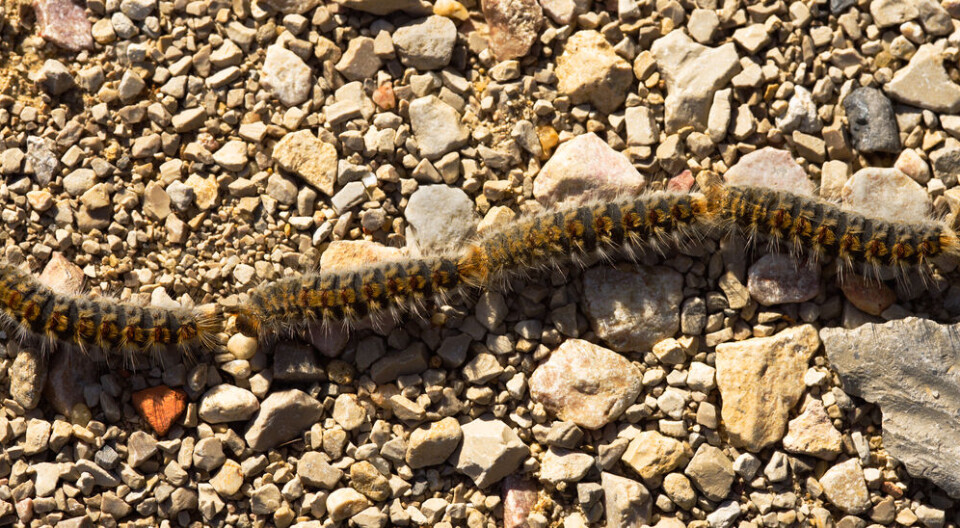-
Online ‘anti-waste’ supermarket offers deals on everyday items in France - we test it
Discounts of 10% to 50% available on brand products
-
The curious case of Good Friday: Why only some parts of France get the day off
Three French departments benefit from two extra public holidays
-
How long does it take to sell property in different areas of France? New study
Many major cities are showing signs of recovery when it comes to supply, demand, prices, and time to sell
Processionary caterpillars in French forest blamed for sick dogs
A woman who walked her pets in a tree-covered area had to rush them to the vet

Processionary caterpillars - which travel in lines and are covered in toxic micro-hairs - have been blamed for increasing reports of sick dogs in the south of France.
A dog owner who walked her two dogs in the Forêt Domaniale de Notre Dame de Parlatges, in Saint-Privat, Hérault (Occitanie), reported problems with her pets - including vomiting, excess drool, coughing, eye irritation, trouble breathing, and mouths becoming inflamed shortly after starting the walk.
Laura Poirier told local newspaper Midi Libre that she had also experienced discomfort and allergy-like symptoms in her airway, eyes, and face.
She rushed the dogs to a local vet who quickly connected the problems to processionary caterpillars, and said it was “common in the Parlatges forest”.
"When I told him where I'd come from, and in view of the symptoms, the vet immediately thought it was a reaction to processionary caterpillars," said Ms Poirier.
Ms Poirier said she had not seen any nests in the trees at the time of the irritation, but it later emerged that the trees had been cut in recent days, so remnants of nests could have fallen on to the ground, making it easier for the dogs to come into contact with them.
“The most plausible explanation is that [the symptoms were] caused by processionary caterpillars,” she said.
Tell-tale nests, ‘processions’, and micro-hairs
Processionary caterpillars are common in France, and are usually seen travelling via their tell-tale ‘procession lines’ down tree trunks and across the ground, as temperatures rise in spring. Their nests look like balls of cotton wool, and can be seen high in tree branches.
In 2022, the caterpillars were officially classified as a harmful species in a government decree.
Originally from the Mediterranean area, the species has spread across the country in the past 50 years as a result of global warming, and the increased numbers of pine trees grown in France. More than 9,000 communes - almost one in four nationwide - across the country are now classified as at risk from the caterpillars.
They have appeared especially early - three months early, in fact - this year due to a cold snap in November, followed by warmer-than-average weather in recent weeks. This enabled them to thrive.
Severe symptoms
The caterpillar larvae can cause damage to trees, while the caterpillars themselves have highly-irritating and toxic micro-hairs covering their body.
There are two types; pine, which tend to affect people from December to April; and oak, which tend to affect people from May to July, said the l'Agence régionale de santé (ARS) of Île-de-France.
The caterpillars’ tiny hairs can easily come off when touched, or can simply blow into the air and be spread by wind. Any contact with animals or humans can cause serious respiratory, digestive, and eye problems, and can even be fatal in severe cases.
Read more: Health warning with France in peak period for dangerous caterpillars
Read more: Two types of processionary caterpillars gaining ground in France
Symptoms of irritation include:
- Painful, severely itchy rash within eight hours of skin contact;
- Conjunctivitis (red, painful, watery eyes) within one to four hours in case of eye contact;
- Sneezing, sore throat, difficulty swallowing and possibly breathing difficulties if inhaled;
- Hypersalivation, vomiting and abdominal pain if ingested.
The ARS advises people “not to approach or touch these caterpillars or their nests”.
The ARS also advises:
- Wear long clothes when walking in the forest
- Avoid rubbing your eyes during or after a walk
- Wash fruit and vegetables from your garden
- Avoid drying clothes next to infested trees
- Do not let pets rummage on the ground or spend too long ‘investigating’ or eating unknown vegetation or objects while on walks
- Take a shower and change your clothes if you suspect you have been exposed to the caterpillars.
Related articles
‘What I learnt about processionary caterpillars in my French garden’
Processionary caterpillars now officially a harmful species in France
























